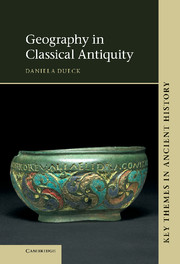Chapter 4 - Cartography
Published online by Cambridge University Press: 05 June 2012
Summary
A pre-modern world
In 1986, seven maps drawn in ink on thin pieces of wood were discovered in thegrave of a military officer buried around 239 bce; themaps represent a small region at a scale of c. 1:300,000.Already in 1973, the excavation of the grave of a ruler of 168bce had brought to light a map of a larger region;on it, drawn to a scale of c. 1:180,000, were marked plains,mountains, rivers, roads and places with standardized symbols and names. Thesame grave preserved another map, which presented a detail of the same region,at a scale c. 1:100,000, marking forts and lines of defence.During their lifetimes, the officer and the ruler had both apparently had accessto scale maps that were so important to them that they were buried with them. Wealso have literary evidence from the same period of the use of maps. Ahistorical work from the second/first centurybce, for example, relates that in 227bce the son of a ruler ordered a man to kill aneighbouring dynast. To get close to his intended victim, the killer pretendedto want to offer the dynast a map sent to him as a present by his master. Hegained access to the man and was able to conceal a dagger in the map roll. Butthe victim survived and founded his own dynasty. Twenty years later, in 207bce, his capital was attacked, and, although thesoldiers could have ransacked the palace and looted its treasures, they wereinterested only in the administrative centre with its archive and its maps– which ultimately contributed to the formation of a new dynasty thatlasted until 9 ce.
The pre-modern world to which these artefacts and stories belong is not that ofGreece and Rome. Rather, the events described above took place in ancient China;there are no comparable examples from the ancient Mediterranean. Is this lack ofevidence from the classical world merely a coincidence? Or is it a consequenceof a feature of pre-modern Europe, in which ‘high culture’ formsonly a thin ‘veneer’, as Patricia Crone argues in her study of(non-classical) pre-industrial societies:
An educated man could travel over huge distances speaking the same learnedlanguage, discussing the same body of ideas … But the trans-localculture did not penetrate very deep … The high culture owed thispeculiar combination of wide expanse and superficiality to the nature ofcommunications in the pre-industrial world, in combination with scarcity andpolitical factors.
Information
- Type
- Chapter
- Information
- Geography in Classical Antiquity , pp. 99 - 110Publisher: Cambridge University PressPrint publication year: 2012
Accessibility standard: Unknown
- 3
- Cited by
